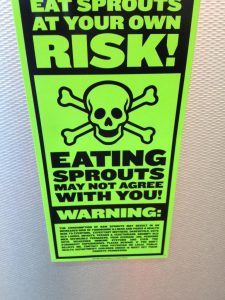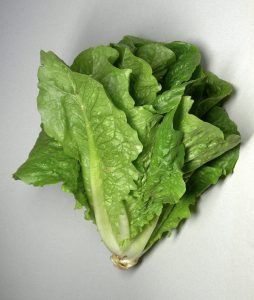Nine years ago I had my most memorable bout with foodborne illness. I had Campylobacter and it was terrible. It all started with a trip to visit Doug in Kansas.
I gave a somewhat incoherent talk to an undergraduate food microbiology class while sweating; slept most of my visit away; went to a football game; left the football game at halftime; spent two nights rushing to the bathroom every hour to evacuate my intestines.
I wanted to blame Doug.
He brings out the best in people.
After a feverish trip home (diarrhea on a plane sucks) and crashing for the remainder of the weekend I went to my doctor to get things checked out. I described my symptoms, had a rectal exam (fun) and was given the materials needed for a stool sample.

The idea of stool sample harvesting was way more fun than the actual act.
It’s amazing any foodborne illnesses are confirmed with stool samples because the process is a bit nuts. It took some thinking to figure out how to catch the sample without contaminating it with water or urine. The final decision was to use the bucket from our cleaned and sanitized salad spinner – which has since been retired – and place it in the toilet bowl.
I took the poop harvest and filled three vials to fill (one for C. difficile, one for parasites and another for other pathogens), and a bonus margarine-like tub for “other things.” The vials were easy, they came with their own spoons. After ten swipes across the base of the former salad spinner I was able to messily get the rest of the sample collected in the tub. Then came the clean-up. This whole episode took me about 45 minutes.
I proudly returned to the doctor’s office with samples in hand. I asked her what percentage of stool sample kits come back filled with poop. She said about 10%.
That’s the problem with clinical confirmation of foodborne illness pathogens.
Patrick Quade and the
iwaspoisoned.com group is trying to add to the toolbox of public health foodborne illness investigations, because not a lot of samples make it to public health so cases can be confirmed.
According to the
New York Times,
this is the era of internet-assisted consumer revenge, and as scorned customers in industries from dentistry to dog-walking have used digital platforms to broadcast their displeasure, the balance of power has tipped considerably in the buyer’s favor. This is especially true of IWasPoisoned, which has collected about 89,000 reports since it opened in 2009. Consumers use the site to decide which restaurants to avoid, and public health departments and food industry groups routinely monitor its submissions, hoping to identify outbreaks before they spread. The site has even begun to tilt stocks, as traders on Wall Street see the value of knowing which national restaurant chain might soon have a food-safety crisis on its hands.
Not everyone is happy about the added transparency. Restaurant executives have criticized IWasPoisoned for allowing anonymous and unverified submissions, which they say leads to false reports and irresponsible fear-mongering. Some public health officials have objected on the grounds that food poisoning victims can’t be trusted to correctly identify what made them sick.
“It’s not helping food safety,” said Martin Wiedmann, a professor of food safety at Cornell University. “If you want to trace food-borne illness, it needs to be done by public health departments, and it needs to include food history.”
I dunno. Maybe it will help as a supplemental data set. There are folks in local and state health departments subscribing to alerts that can lead to earlier and more focused investigations.
The end of my story is that I was diagnosed with campylobacteriosis. I became a statistic. I was administered a food history questionnaire. No answers on a source ever came back. New tools to crowdsource public health information can act as a an early warning system for outbreak and illness investigators.










